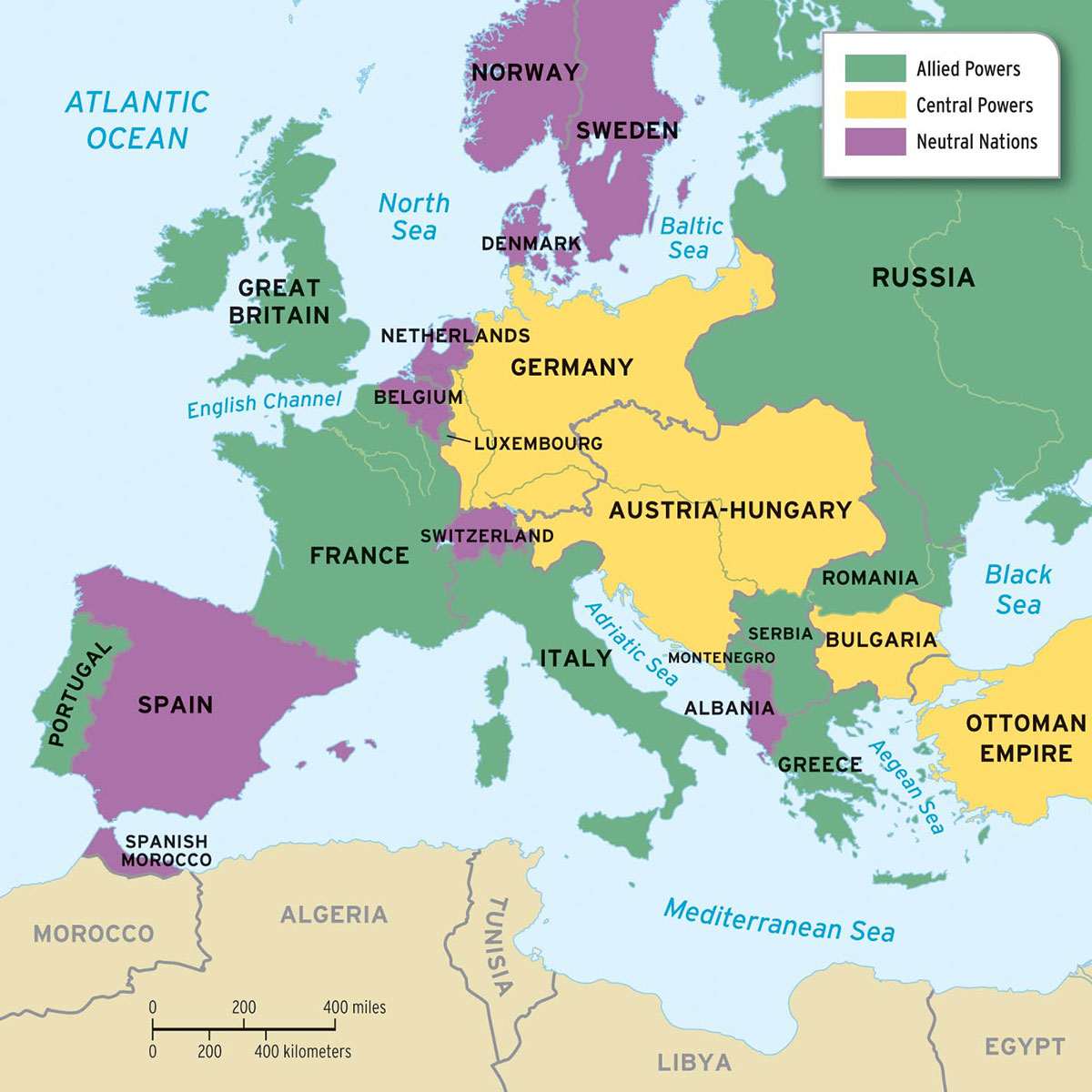Describe Conditions in Europe After World War I
The two most brutal and egregious dictatorships in Europe after World War I or perhaps in any place and time were Nazi Germany and Soviet Russia. Families were broken up people were uprooted and all around swirled the dark currents of hatred and loss.

World War I Begins Division Of Historical And Cultural Affairs State Of Delaware
The European economies had been ravaged by the war.

. French Italian German economies were in ruins. Aftermath of World War I and the Rise of Nazism 19181933. There were financial burdens from war debt political turmoil from collapsed governments in Russia Germany Austria-Hungary and the Ottoman empire and unrest sweeping through Europes various colonies.
In the years after World War II which of the following caused many people from Asian and African countries to migrate to Europe. The French and the British were busily dividing the spoils of the war between them but still reeling from the enormous human cost of the War. World War I known at the time as The Great War was a global conflict which went on from 1914 to 1918.
Four empires collapsed due to the war old countries were abolished new ones were formed boundaries were redrawn international organizations were established and many new and old ideologies took a. What nations existed after World War 1. 2-Economic impact of war debtson Europe.
Describe conditions in Europe after World War I. What were three conditions Europe was in after World War 1. Some of the features that characterize the international situation after 1945 could be summarized as follows.
The map of Eastern Europe was redrawn several times in the next few years. World War I brought about the end of the centuries-old monarchies and empires of Europe and the reorganisation of European borders and sovereignties. The end of the Soviet Union B.
Before and after World War I Germany was seriously divided by region religion class and politics. Living conditions back during the time of the first World War where very different from the modern warfare that we have today. 2-Strengthening of the USSR and extension of socialism to other areas.
More than 85 million people had died and it only got worse when the Spanish Influenza hit all of Europe. One major polemic issue was the fate of Germany in the postwar period. There were serious disagreements between the United States on one side and the Soviet Union on the other side.
The Victors still froze out Asia the Middle East and Africa. In the wake of the terrible conflict Europe and the world were hardly recognisable and it grew clear that they would never return. The aftermath of World War I saw drastic political cultural economic and social change across Eurasia Africa and even in areas outside those that were directly involved.
Citizens faced poor economic conditions skyrocketing unemployment political instability and profound social change. In 1918 the flames of the Great War finally receded from the continent that over four years had become a barren cratered plain. 3-United States emerges as the first imperialist power.
World War I was the first global war of the 20th century taking place between July 28 1914 and November 11 1918. Post-war treaties led to the formation of an independent nation-state of Poland the dissolution of Austria-Hungary and the formation of Czechoslovakia and Yugoslavia. New economic opportunities after colonialism ended C.
Defeat in war high unemployment and the spread of communism. What were three conditions Europe was in after World War 1. 1-New nations in Eastern Europe.
When Europe survived from First World War it was injured both economically and politically. After World War 1 conditions were chaotic in Germany and Eastern Europe. Select all that apply.
It was really tough for Europe for the world. Though Germany was blamed for the start of the war some historians argue for collective responsibility between the warring parties. The causes included the burdensome reparations imposed after World War I coupled with a general inflationary period in Europe in the 1920s another direct result of a materially catastrophic war.
Describe conditions in Europe after World War 1. Millions of people had died from epidemics or starvation and there were many that survived with permanent disables or traumas. The causes of the war are complicated.
All of these problems led many Germans to conclude that. 1-New nations in Eastern Europe. 1-Loss of the hegemony of Western Europe in the world.
As in Italy and Russia a strong democratic tradition did not exist in German history. Why was there so much migration after World War II in Europe. New laws after.
2-Economic impact of war debts on Europe. In the aftermath of World War I Germans struggled to understand their countrys uncertain future. In the years following World War I there was spiraling hyperinflation of the German currency Reichsmark by 1923.


No comments for "Describe Conditions in Europe After World War I"
Post a Comment